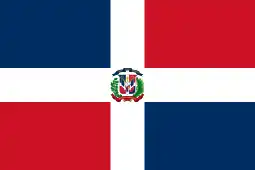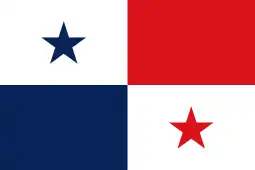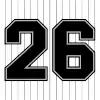| Chiba Lotte Marines | |||||
|---|---|---|---|---|---|
| 千葉ロッテマリーンズ | |||||
| |||||
| Information | |||||
| League | Nippon Professional Baseball
| ||||
| Location | Mihama-ku, Chiba, Chiba, Japan | ||||
| Ballpark | ZOZO Marine Stadium | ||||
| Founded | November 26, 1949 | ||||
| Nickname(s) | Kamome (鴎, seagulls) | ||||
| PL pennants | 5 (1950, 1960, 1970, 1974, 2005) | ||||
| Japan Series championships | 4 (1950, 1974, 2005, 2010) | ||||
| Former name(s) |
| ||||
| Former ballparks |
| ||||
| Colors | Black, White | ||||
| Mascot | Mar-kun, Rine-chan, and Zu-chan | ||||
| Playoff berths | |||||
| Retired numbers | |||||
| Ownership | Katsumi Kawai | ||||
| Management | Lotte Holdings | ||||
| Manager | Masato Yoshii | ||||
| Uniforms | |||||
| |||||
The Chiba Lotte Marines (千葉ロッテマリーンズ, Chiba Rotte Marīnzu) are a professional baseball team in Japan's Pacific League based in Chiba City, Chiba Prefecture, in the Kantō region, and owned by Lotte Holdings Co., Ltd. The Marines were a founding member of the Pacific League in 1950 as the Mainichi Orions when the Japanese Baseball League reorganized into Nippon Professional Baseball. Since 1992, the Marines' home ballpark has been ZOZO Marine Stadium, located in the Mihama Ward of Chiba, seating 30,118 people.
The "Marines" name originates from the name of the stadium they play in, which is officially named Chiba Marine Stadium, because the stadium is located right on the water.
Through 2022, the franchise's all-time record is 4733-4701-394 (.501).[1]
History
The Marines franchise began in 1950 as the Mainichi Orions, an inaugural member of the Pacific League. The Orions were named after the constellation of the same name.[2] The Marines won the inaugural Japan Series in 1950.
In 1958, the team was merged with the Daiei Unions and renamed the Daimai Orions. In 1964 they became the Tokyo Orions, and the Lotte Orions in 1969. The franchise was slow to replicate its initial success: the Orions made the Japan Series in 1960 and 1970, only to lose both years.
The team played in central Tokyo until 1972. From 1973 to 1977 the Lotte Orions played in the northern Japanese city of Sendai. In 1974, they beat the Chunichi Dragons, becoming the first Pacific League team to win the Series in ten years, as the Yomiuri Giants had claimed the prior nine titles behind the Oh–Nagashima attack. After beating the Dragons, their owners, Lotte Holdings, decided to hold their victory parade in Tokyo, which shocked fans in Sendai. This eventually caused their attendance there to crash, from sold out games in 1973, to only about 2000-3000 for their last few years in Sendai.[3]
In 1977, the Orions signed Major League Baseball player Leron Lee, who ended up playing for the team for eleven seasons, compiling a .320 career batting average and slugging 283 home runs with 912 career RBI. From his retirement to early 2018 (when surpassed by Norichika Aoki), Lee held the Japanese record for career batting average (players with more than 4,000 at bats). In 1978, Lee invited younger brother Leon Lee to play in Japan, and the brothers formed a feared cleanup for the Orions for five seasons — in 1980, Leron had 33 home runs, 90 RBI, and a batting average of .358; while Leon slugged 41 home runs and drove in 116 runs, with a batting average of .340.
In 1978 the team returned to the Tokyo area, settling in Kawasaki's Kawasaki Stadium, at one time home to the Taiyo Whales (today's Yokohama DeNA Baystars).
In 1992, the team moved to Chiba City's Chiba Marine Stadium on the eastern shore of Tokyo Bay and were renamed the Chiba Lotte Marines. They were named the Marines (although they held a fan vote, and Dolphins won, and Pirates was a popular choice, Dolphins was out, even though the Nagoya Dolphins were long dead, the letter "D" in broadcasts was already taken by the Dragons, while "M" was available, and the Chiba Pirates name was used by a team in a baseball manga, and since the team in that manga is terrible, executives thought it would look bad on the real team) because they stated that "Marines" meant "heroes of the sea".[2] Originally, the club used pink, blue, and white on their logo, which included a pirate ship, with a seagull below it, and a wave pattern to reflect the ocean currents off Chiba's coast. In 1995, this was changed to the logo's current design, while dropping pink and blue in favor of red, black and white (with red being dropped in 2019). The current logo's design features a baseball in the background with a seagull soaring, with the club's name around the circle.
The team failed to reach the Japan Series again until 2005. The Marines started the 2005 season in first place behind American manager Bobby Valentine, but fell behind the Fukuoka SoftBank Hawks as the year progressed. Under the playoff format of the time, the preliminary five-game playoff round, prior to the Japan Series, saw the teams with the best first and second half records face off. The Marines defeated the Hawks three games to two in the Pacific League championship, winning the rubber match despite entering the eighth inning trailing, 2–1.
The Marines thus qualified for the Japan Series, the first time they had reached the tournament since 1974, a 31-year drought. In a one-sided series, the Marines swept the Hanshin Tigers in four games, scoring ten runs in each of the first three games. The apparent ease with which the Marines defeated the Tigers added fuel to the ongoing debate concerning the need for a playoff system in the Central League, which was finally added in 2007 (see Climax Series). The Marines went on to defeat South Korea's Samsung Lions in the final round of the Konami Cup Championships.
In 2010, the Marines clinched third place on the last day of the season to earn a berth into the Climax Series. They went on to become the first third place team to ever win the Climax Series, and faced off with the Chunichi Dragons in the 2010 Japan Series. The Marines defeated the Dragons in seven games, composed of four wins, two losses, and one tie, winning their second Japan Series in under ten years.
In 2013, the Marines clinched third place to clinch a berth in the Climax Series and faced the Saitama Seibu Lions in the first stage. They defeated the Lions in 3 games to move onto the final stage. They would lose to the Tohoku Rakuten Golden Eagles in 5 games, who would go on and defeat the Yomiuri Giants in 7 games to win their first (and still only) Japan Series title.
They would make it back in the playoffs in 2015. They defeated the Hokkaido Nippon-Ham Fighters in 3 games in the first round, then got swept by the Fukuoka SoftBank Hawks, who received a one game advantage for having the best record in the Pacific League.
The following season, they returned to the playoffs. They would make a much earlier exit, as they were swept by the Hawks in 2 games in the first stage.
It would not be until 2020 when they returned to the playoffs. The Hawks, with a 1 game advantage, would sweep them again in the first stage.
They bounced back the following year by defeating the Eagles in 2 games in the first stage, including a tie in the second game which allowed them to advance as they had the better record at 67-57-19, while the Eagles had a 66-62-15 record. They got swept by the Orix Buffaloes in the final stage in 3 games, however a tie in the third game and Orix having the better record at 70-55-18, allowed the Buffaloes to advance.
On April 10, 2022, Rōki Sasaki threw a perfect game, NPB's first in 28 years and the 16th in NPB history. Sasaki tied an existing NPB record by striking out 19 batters, and setting a new record by striking out 13 consecutive batters.[4]
Current roster
| First squad | Second squad | ||||||
|
Pitchers
Catchers
|
Infielders
Outfielders
Manager Coaches
|
Pitchers
Catchers
|
Infielders
Outfielders
Manager
Coaches
| ||||
| Development Players | |||||||
| |||||||
| Updated December 24, 2023 | → All NPB rosters | ||||||
Notable former players
 Benny Agbayani
Benny Agbayani Hiromitsu Ochiai
Hiromitsu Ochiai Alfredo Despaigne
Alfredo Despaigne Mike Diaz
Mike Diaz Jose Fernández
Jose Fernández Julio Franco
Julio Franco Matt Franco
Matt Franco Mel Hall
Mel Hall Isao Harimoto
Isao Harimoto Baek In-chun
Baek In-chun Pete Incaviglia
Pete Incaviglia Hideki Irabu
Hideki Irabu Kazuya Fukuura (retired in 2019)
Kazuya Fukuura (retired in 2019) Masaaki Kitaru
Masaaki Kitaru Kiyoshi Hatsushiba
Kiyoshi Hatsushiba Masahide Kobayashi
Masahide Kobayashi Tsuyoshi Nishioka
Tsuyoshi Nishioka Satoru Komiyama (retired in 2009)
Satoru Komiyama (retired in 2009) Bill Madlock
Bill Madlock Leon Lee (father of Derrek Lee)
Leon Lee (father of Derrek Lee) Leron Lee (uncle of Derrek Lee)
Leron Lee (uncle of Derrek Lee) Choji Murata (elected to Japanese Baseball Hall of Fame in 2005)
Choji Murata (elected to Japanese Baseball Hall of Fame in 2005) Jim Lefebvre
Jim Lefebvre Darryl Motley
Darryl Motley Bill R.W. Murphy
Bill R.W. Murphy Yuhei Nakaushiro
Yuhei Nakaushiro Katsuo So
Katsuo So Kazuhiro Yamauchi
Kazuhiro Yamauchi Akihito Igarashi
Akihito Igarashi Michiyo Arito
Michiyo Arito Saburo (retired in 2016)
Saburo (retired in 2016) Tomohiro Kuroki (also known as "Johnny Kuroki")
Tomohiro Kuroki (also known as "Johnny Kuroki") Katsuya Nomura
Katsuya Nomura Tomoya Satozaki (retired in 2014)
Tomoya Satozaki (retired in 2014) Dan Serafini
Dan Serafini Lee Seung-yuop
Lee Seung-yuop Naoyuki Shimizu (traded to Yokohama BayStars in 2009)
Naoyuki Shimizu (traded to Yokohama BayStars in 2009) Kim Tae-kyun
Kim Tae-kyun Norifumi Nishimura
Norifumi Nishimura Shunsuke Watanabe
Shunsuke Watanabe Julio Zuleta
Julio Zuleta Frank Bolick
Frank Bolick Derrick May
Derrick May Rick Short
Rick Short Brian Sikorski
Brian Sikorski José Castillo
José Castillo Chen Kuan-yu
Chen Kuan-yu Wei-Yin Chen
Wei-Yin Chen Luis Cruz
Luis Cruz Toshihide Narimoto
Toshihide Narimoto Makoto Kosaka
Makoto Kosaka Koichi Hori
Koichi Hori Adeiny Hechavarria
Adeiny Hechavarria Leonys Martín
Leonys Martín Hiroyuki Yamazaki
Hiroyuki Yamazaki Yukinaga Maeda
Yukinaga Maeda Kazuhiko Ushijima
Kazuhiko Ushijima Tadahito Iguchi
Tadahito Iguchi Hideaki Takazawa
Hideaki Takazawa Kihachi Enomoto
Kihachi Enomoto Eric Hillman
Eric Hillman
MLB players
Retired:
- Hideki Irabu (1997–2002)
- Masato Yoshii (1998–2002)
- Satoru Komiyama (2002)
- Tadahito Iguchi (2005–2008)
- Masahide Kobayashi (2008–2009)
- Tsuyoshi Nishioka (2011–2012)
- Ryohei Tanaka (2009–2011)
- Yasuhiko Yabuta (2008–2009)
- Shunsuke Watanabe (2014)
- Yuhei Nakaushiro (2016–2018)
- Hirokazu Sawamura (2021–2022)
Honored number
|
- 26 – This number was retired in honor of the Marines' fans in 2005. It was inspired by some teams in other sports (such as football, which retires "12" for the "12th man", or basketball, which retires "6" for the "6th man").The Tohoku Rakuten Golden Eagles has the No. 10 retired in similar fashion. MLB's Los Angeles Angels has retired No. 26, in same fashion, for the founder Gene Autry.
Managers
| No. | Years in office |
YR | Managers | G | W | L | T | Win% | Pacific League championships |
Japan Series championships |
Playoff berths |
|---|---|---|---|---|---|---|---|---|---|---|---|
| 1 | 1950–1951 | 2 | Yoshio Yuasa | 230 | 135 | 85 | 10 | .614 | 1 (1950) | 1 (1950) | |
| 2 | 1952 | 1 | Yoshio Yuasa Kaoru Betto (1st) |
120 | 75 | 45 | 0 | .625 | |||
| 3 | 1953 | 1 | Tadashi Wakabayashi | 120 | 56 | 62 | 2 | .475 | |||
| 4 | 1954–1959 | 6 | Kaoru Betto (2nd) | 834 | 467 | 341 | 26 | .578 | |||
| 5 | 1960 | 1 | Yukio Nishimoto | 133 | 82 | 48 | 3 | .631 | 1 (1960) | ||
| 6 | 1961–1962 | 2 | Mitsuo Uno | 272 | 132 | 136 | 4 | .493 | |||
| 7 | 1963–1965 | 3 | Yasuji Hondo | 440 | 203 | 227 | 10 | .472 | |||
| 8 | 1966 | 1 | Hitoshi Tamaru | 134 | 61 | 69 | 4 | .469 | |||
| 9 | 1967 | 1 | Katsuki Tokura, Watarui Nonin |
137 | 61 | 69 | 7 | .469 | |||
| 10 | 1968–1970 | 3 | Watarui Nonin | 399 | 216 | 164 | 19 | .568 | 1 (1970) | ||
| 11 | 1971 | 1 | Watarui Nonin, Keiji Ohsawa |
130 | 80 | 46 | 4 | .635 | |||
| 12 | 1972 | 1 | Keiji Ohsawa | 130 | 59 | 68 | 3 | .465 | |||
| 13 | 1973–1978 | 6 | Masaichi Kaneda (1st) | 780 | 374 | 339 | 67 | .525 | 1 (1974) | 1 (1974) | 2 (1974,1977) |
| 14 | 1979–1981 | 3 | Kazuhiro Yamauchi | 390 | 182 | 171 | 37 | .516 | 2 (1980,1981) | ||
| 15 | 1982–1983 | 2 | Kazuyoshi Yamamoto | 260 | 97 | 145 | 18 | .401 | |||
| 16 | 1984–1986 | 3 | Kazuhisa Inao | 390 | 185 | 175 | 30 | .514 | |||
| 17 | 1987–1989 | 3 | Michiyo Arito | 390 | 153 | 213 | 24 | .418 | |||
| 18 | 1990–1991 | 2 | Masaichi Kaneda (2nd) | 260 | 105 | 148 | 7 | .415 | |||
| 19 | 1992–1994 | 3 | Soroku Yagisawa | 390 | 160 | 224 | 6 | .417 | |||
| 20 | 1995 | 1 | Bobby Valentine (1st) | 130 | 69 | 58 | 3 | .543 | |||
| 21 | 1996 | 1 | Akira Ejiri | 130 | 60 | 67 | 3 | .472 | |||
| 22 | 1997–1998 | 2 | Akihito Kondo | 270 | 118 | 147 | 5 | .445 | |||
| 23 | 1999–2003 | 5 | Koji Yamamoto | 690 | 324 | 352 | 14 | .479 | |||
| 24 | 2004–2009 | 6 | Bobby Valentine (2nd) | 837 | 425 | 392 | 20 | .520 | 1 (2005) | 1 (2005) | 2 (2005,2007) |
| 25 | 2010–2012 | 3 | Norifumi Nishimura | 432 | 191 | 213 | 28 | .472 | 1 (2010) | 1 (2010) | |
| 26 | 2013–2017 | 5 | Tsutomu Itoh | 717 | 339 | 368 | 10 | .473 | 3 times (2013,2015,2016) | ||
| 27 | 2018–2022 | 5 | Tadahito Iguchi | 692 | 324 | 338 | 30 | .489 | 1 (2020,2021) | ||
| 28 | 2023– | 1 | Masato Yoshii | 0 | 0 | 0 | 0 | .000 | 0 | ||
| Totals | 71 seasons | 23 managers | 9,551 | 4,597 | 4,580 | 374 | .501 | 5 times | 4 times | 11 times |
Cheer dancers
The Marines' cheer dancing squad is known as M☆Splash!!. They were formed in 2004. Alongside the team's mascots Mar-kun, Rine-chan and Zu-chan, they entertain the crowd during Marines games, with 27 members.[6]
Mascots
Mar-kun (マーくん, Maa-kun) is a main mascot character of the Marines. With his girlfriend Rine-chan (リーンちゃん, Riin-chan) and his young brother Zu-chan (ズーちゃん, Zuu-chan), he entertains spectators at team games. Their name is a separateness of the team name. Originally Rine-chan wore a pink sports visor cap till the 2022 season when she wore the same baseball cap as her boyfriend while retaining the skirt, while Zu-chan wears the cap backwards and wears an apron instead of the jersey beginning 2022, before that he wore a shirt unless all three wear their team's special home uniforms.
Mysterious fish (謎の魚, Nazo-no-sakana) was a mascot character that was introduced in May 2017. He is a weird fish with legs.[7][8] He has collaborated with Hawaiian Airlines that former Marines' player Benny Agbayani works for, since 2018.[9] However, the person playing the mascot announced after the 2021 season that he would retire, which also meant the mascot was officially retired.[10]
Back when the team were known as the "Lotte Orions", their mascot was a character known simply as Bubble-Boy (バブル坊や, Bable-Boya) who only appeared as a logo.
In 2005, the Marines introduced a mascot named Cool-kun ( かっこいいくん, Kakkoi-kun), a penguin who was known for his acrobatic stunts and would often challenge mascots like Doala and B.B to acrobatic stunt contests at rival games. He also would be stuck up and rude at times, but he would burst to tears or show great emotion at the right time. Despite being friends with Mar-kun, they do not get along very well. In 2016, he was retired by the team.[11]
Minor League team
The Marines farm team plays in the Eastern League. The team was founded as the Mainichi Glitter Orions in 1950.
See also
References
- ↑ "千葉ロッテマリーンズ 年度別成績 (1950-2023)".
- 1 2 How Every NPB Team got its Name (feat. The Yakyu Cosmopolitan), retrieved 2022-02-08
- ↑ Why Rays to Montreal will Inevitably Fail - The Story of the "Gypsy Lotte" Orions, retrieved 2022-01-27
- ↑ (Kyodo News)
- ↑ "Nippon Professional Baseball 千葉ロッテマリーンズ 年度別成績 (1950-2021)". NPB.jp (in Japanese). Retrieved August 19, 2021.
- ↑ "M☆Splash!!とは|千葉ロッテマリーンズ". 千葉ロッテマリーンズ オフィシャルサイト (in Japanese). Retrieved 2022-06-23.
- ↑ "Please observe the new fish mascot in the Nippon Professional Baseball league". Cut4. 2017-05-31. Retrieved 2020-05-19.
- ↑ "Here's the NPB fish mascot casually pushing a suitcase with hands protruding from inside its mouth". Cut4. 2018-04-29. Retrieved 2020-05-19.
- ↑ "Creepy Evolving Japanese Baseball Mascot Reveals Its Fifth and Final Form". grape. 2018-06-27. Retrieved 2020-05-19.
- ↑ "【12/13(月)更新】謎の魚引退|千葉ロッテマリーンズ". 千葉ロッテマリーンズ オフィシャルサイト (in Japanese). Retrieved 2021-12-14.
- ↑ "マスコットキャラクターCOOLについて|千葉ロッテマリーンズ". 千葉ロッテマリーンズ オフィシャルサイト (in Japanese). Retrieved 2021-12-24.



